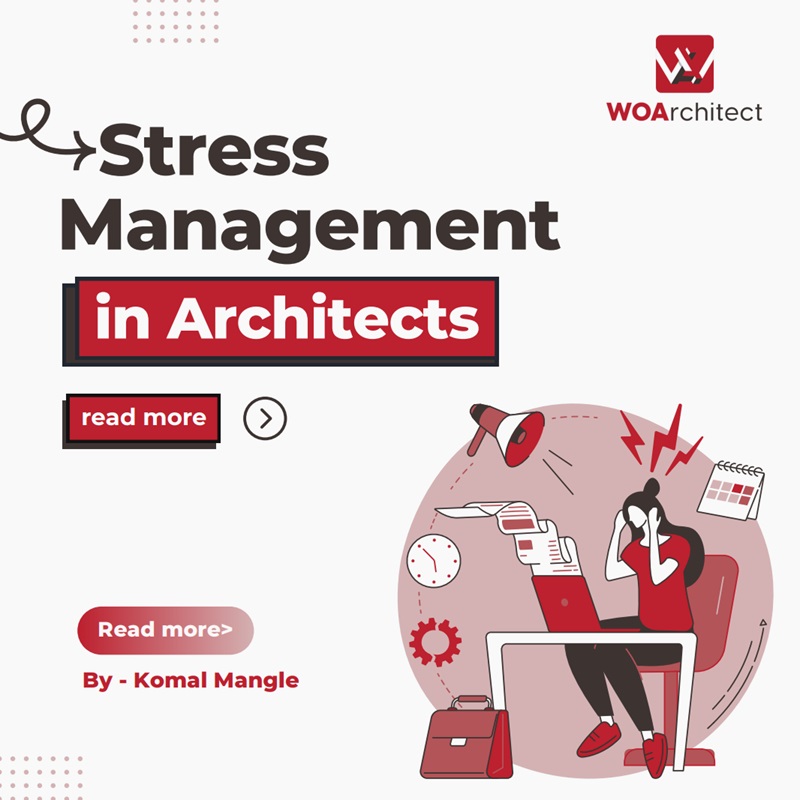
Business of Architecture
Architecture practice extends much beyond just creative spatial solutions. As an architect progresses in professional practice over the years, designing occupies only fraction of work agenda. Young architects are unaware of the practical challenges that come into play before design even commences and those snags that erupt post-completion and handover. Commonly, the lack of knowledge is about on-going market rates, tentative project cost or consultation fees for the project. Even if they manage to acquire a job, they are unaware of professional liabilities and legal implications of their appointment. These roles and responsibilities of an architect are often not adequately addressed in academic curriculum.
The curriculum mandate of architectural internship offers students their first glimpse into the practice; but the exposure is limited to the tasks handed to them. Owing to their limited skills, interns mostly work on presentations, 3D modelling, drawing corrections etc. If they are lucky; concepts of small projects, an occasional site visit and perhaps; some interactions with consultant and/or client. Professional firms do benefit from the interns and some firms do undertake sincere effort to involve them in projects during their internship. Yet, due to the limitation of skills and time, interns are unable to comprehend the complexities of architecture as a business.
Post obtaining the bachelor’s degree, young architects are often on their own. Most dominant aspiration of architects is to start their own firm or practice, but they are unsure of the path leading to this dream. It is a very confusing stage for these young enthusiasts. They begin their professional journey unsure of where it will lead them. In most cases they take up the first opportunity that comes across. As soon as they enter the work force, they realize that they lack much skills that the profession demands. Architecture offices mostly utilize the drawing and presentation skills of young architects as they are still not equipped to get involved in the business of our profession. It takes many years of experience to finally become a part of a firm’s business development and financial decisions. By the time an architect comes close to understanding these operational business skills, many precious years and considerable amount of enthusiasm is already lost.
This traditional on-going pattern needs a revamp... a fresh outlook.
Now let’s look at the possibility of completely changing this scenario from the start. We introduce the students with aspects of money management and business skills in the college. They are introduced to legal liabilities of an architect and about entrepreneurship. A cross connect between various disciplines beyond building industry. Faculty from different fields introduce these allied and essential knowledge-systems to architecture students. Teaching staff of architecture college is not only restricted to architects or structural engineers, but expands to charted accountants, business management, financial advisors and law faculty. We deliberately and positively burst the ‘bubble’ of believing that pure spatial creativity is required to succeed as an architect. In the process we try to expand their horizon towards marketability, feasibility and budget control as they design. We teach them about their rights as a professional, legalities of business and intellectual property protection. As these students cross over to the professional world, they are better aware of multifaceted aspects of architectural practices. Equipped with a broader understanding about projects and practice; they will contribute productively to the projects in the professional world.
The responsibility of upgrading young architects in practical aspects does not solely lie on educational institutes. The architects in practice and architectural firms will also play their share of roles in this scenario. With some basic background from academia these young minds will start contributing to business in a holistic way. Architects and firms should mentor young architects early-on in areas of business development, project finances, legalities and liabilities of practice. This process will escalate the growth of fresh architect into a more responsible professional and they will mature faster in their respective careers. It will help the firms to get more productive and practical solutions for their projects and a helping hand in development of their business. Employees who think and act like entrepreneurs will escalate their own growth as well as the growth of their firm. Contrary to the most dominant fear of losing the business to the employee, knowledge shared is knowledge gained. By equipping young architects with entrepreneur skills, a practicing architect can harness their fresh ideas and will stay abreast with latest trends. Younger generation being techno-savvy will keep the firm afloat in this fast paced, ever changing digital world. There are symbiotic benefits in involving young architects into business.
Following are few suggested areas which will mutually benefit both firms and young architects:
1. Financial literacy
Understanding of finance and money management is a very important aspects of any profession. Ideally, one should start learning about money and its equations right from school. After all, we learn so we can earn. But this most important part of our learning often takes a backseat in our education. Nevertheless at least financial literacy ought to start in professional colleges and then get imbibed in our practice. We need to understand the worth of our self as professionals, our projects as products and price we pay to be in business. In totality, we should learn and teach about:
- Professional remunerations for architects
- Fees structures and payment stages of projects
- Taxes which we are entitled to pay
Once we start sharing and educating about finances, we are equipping our young architects with tools to make informed decisions about money on both professional and personal front. This understanding about financial aspect, will make them thoughtful about the worth of our time in projects, their renumerations against skills and importance of timely bill generations against project work.
2. Acquiring Jobs
An architecture practice will thrive only if there is a steady inflow /and outflow of projects. The part of getting the job, fulfilling the expectation of project/ client and successful execution of project forms the core of architectural practice. A practice is successful only if it keeps excelling in all three aspects leading to repeat business, good reputation and referrals for further projects.
Successful project execution is the result of efforts and skills. A repeat job from the same client or a reference from the client is a certificate of your success. It is a proof of architect’s merit and client’s faith. It is a start of building a reputation in professional world. Every firm or architect has different approaches to handle jobs, which could be taught and groomed by a mentor in the firm. This will help young architects to produce more feasible and convincing work for the firm.
3. Managing Business/ Office
Managing office is a challenging task. A young architect needs to understand the responsibilities incurred by an architect when a project is designed or approved under their name. The professional liabilities and legal bindings which comes to the architect as a professional. The importance and necessities of regulations, empanelment, copy rights, intellectual property protection and all the legalities which comes with operating of firms. Apart from this, cost of the setup and recurring expenditure which are inevitable part of architectural practice should be understood by all the employees who work in the firm. This awareness and understanding will make them more involved as a team member and responsible about using office resources. Inculcating these values in employees will also help the firm against plagiarism and copyright infringements.
4. Personal skills:
Architecture practice being a service, caters to requirements of clients while dealing with spectrum of professionals from building industry and beyond. Besides clients, we deal with consultants, artists, contractors, site workers, approving authorities, government officials, vendors, lawyers and accountants to name few. They range from skilled, semi-skilled to unskilled category. While interacting with such wide variety of people, one requires good communication skills, people management skills along with good amount of emotional intelligence quotient. A professional who gets their work done while maintaining good relations, respecting fellow professionals and keeping professional ethics uncompromised is respected in market. This is a tough equation to maintain. However, an architect will only thrive in their career if they learn to strike this perfect balance. The same lesson needs to be imbibed within budding architects.
A joint effort from academician, professionals and even budding architects is required to change the age-old impression of an architect as mere artist with professional degree. In modern times, architect is expected to play multitude of roles and we are not equipped enough for it. We need to take a fresh look at entire scenario from education, mentorship to professional management in order to collectively upgrade. We should be an all-inclusive community working in cohesion to grow together and develop our fraternity.
About Author:
Ar. Snehal Jagdale - Surve is an Architect – Planner, educator and co-founder of Alternate Angle. As a professional, she has worked in USA and India on projects including landscape architecture, urban planning and architecture. She has successfully led design teams to execute large scale commercial and residential projects for construction major Larsen & Tubro (L&T), Design Cell. As a research-oriented person, Snehal shares her experience through publications and seminars for professional development of young and fellow architects. She can be reached on snehal@alternateangle.net.
Earlier published in Indian Architect & Builder- Jan 2019 magazine































